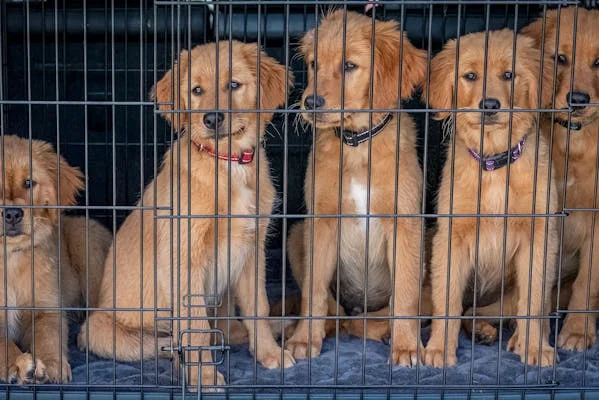In October 2011, a small town in Louisiana became the focal point of one of the most significant animal rescue operations in the state’s history. The event, now widely known as the 175 dogs rescue from hoarder in slidell louisiana, brought attention to the heartbreaking realities of animal hoarding and showcased the incredible power of community action. This massive rescue effort saved 175 dogs from deplorable conditions, offering them a second chance at life while sparking broader conversations about animal welfare and mental health.
What Led to the 175 Dogs Rescue from Hoarder in Slidell, Louisiana?
The Discovery: A Neighborhood in Distress
The story of the 175 dogs rescue from hoarder in slidell louisiana began with concerned neighbors. Residents in a quiet Slidell neighborhood started noticing unusual signs: constant barking, foul odors wafting through the air, and an overwhelming number of dogs visible on a single property. What seemed like an annoyance quickly escalated into a serious concern as the situation became impossible to ignore.
Local authorities received multiple complaints, prompting an investigation by animal control and law enforcement. What they uncovered was beyond comprehension—a hoarding situation that had spiraled out of control, leaving 175 dogs in desperate need of rescue.
Inside the Hoarder’s Property: A Grim Reality
When officials entered the property, they were met with a scene of unimaginable neglect. The 175 dogs were crammed into filthy, overcrowded spaces, surrounded by waste and debris. Many suffered from malnutrition, untreated medical conditions, and severe matting of their fur. Some were too weak to stand, while others displayed signs of fear and trauma from years of neglect.
Animal hoarding, often linked to mental health disorders, occurs when an individual takes in more animals than they can care for. In this case, the hoarder likely started with good intentions but lost control, leading to the crisis that triggered the 175 dogs rescue from hoarder in Slidell, Louisiana.
The Rescue Operation: A Race Against Time
Mobilizing the Team: Coordinating the Effort
Saving 175 dogs from such dire conditions required swift and coordinated action. Local animal control officers teamed up with veterinarians, volunteers, and rescue organizations to execute the rescue. The scale of the operation was unprecedented for Slidell, a small community unaccustomed to handling an animal welfare crisis of this magnitude.
Preparation was key. Rescuers gathered crates, food, water, and medical supplies, knowing that every moment counted. Temporary shelters were set up to house the dogs once they were removed from the property. The goal was clear: get the dogs out safely and provide them with immediate care.
The Rescue Process: Overcoming Challenges
The physical removal of the dogs was no small feat. Many were skittish or aggressive due to lack of socialization, making it difficult for rescuers to approach them. The cramped, unsanitary conditions added another layer of complexity, as teams navigated through the chaos to reach every animal.
Over several hours, the 175 dogs were carefully extracted from the property. Some were carried out in arms, while others were coaxed into crates. The emotional toll on the rescuers was immense—seeing so many animals in distress was heartbreaking, but it fueled their determination to complete the mission.
Immediate Care: Tending to the Survivors
Once removed, the dogs were transported to temporary shelters where veterinarians began assessing their health. The range of issues was staggering: skin infections, parasites, dental disease, and starvation were just the beginning. Behavioral rehabilitation was also critical, as many dogs had never known human kindness or proper care.
The 175 dogs rescue from hoarder in slidell louisiana wasn’t just about getting the animals out—it was about giving them a chance to heal and thrive. Volunteers worked tirelessly, feeding, bathing, and comforting the dogs as they took their first steps toward recovery.
The Aftermath: Rehabilitation and Rehoming
Veterinary Care: Healing the Body and Mind
The road to recovery was long for the 175 dogs rescued in Slidell. Veterinary teams prioritized urgent cases, performing surgeries and treating infections. For some dogs, the damage was too severe, and they didn’t survive despite the best efforts of the caregivers. However, the majority began to show signs of improvement with proper nutrition and medical attention.
Behavioral rehabilitation was equally important. Trainers and volunteers spent countless hours helping the dogs overcome their fear and mistrust. Socialization exercises, gentle handling, and patience slowly transformed them from terrified creatures into adoptable pets.
Finding Forever Homes: A Community Effort
Rehoming 175 dogs was a monumental task, but the Slidell community rose to the occasion. Adoption events were organized, and rescue groups from across Louisiana and beyond stepped in to help. Social media played a vital role, spreading the word and connecting the dogs with potential adopters.
Families opened their hearts and homes, giving these animals the love they’d been denied for so long. Each adoption was a small victory, a testament to the resilience of the dogs and the compassion of those who took them in.
The Broader Impact of the Rescue
Raising Awareness About Animal Hoarding
The 175 dogs rescue from hoarder in Slidell, Louisiana did more than save lives—it shone a spotlight on the issue of animal hoarding. Public awareness grew as media outlets covered the story, prompting discussions about how to identify and prevent similar situations. Hoarding isn’t just an animal welfare issue; it’s a public health and mental health concern that requires a multifaceted approach.
In the wake of the rescue, local officials reviewed animal control policies. New measures were introduced to monitor potential hoarding cases more closely, and resources were allocated to support early intervention. The case became a catalyst for change, inspiring other communities to take action.
Legal Consequences and Mental Health Insights
The individual responsible for hoarding the 175 dogs faced legal repercussions. Charged with multiple counts of animal cruelty and neglect, they were also required to undergo psychological evaluation. This outcome underscored an important truth: hoarding often stems from untreated mental health issues, and addressing it requires compassion as well as accountability.
The Slidell case highlighted the need for better mental health resources. By supporting individuals before their situations escalate, society can prevent the suffering of both humans and animals caught in the cycle of hoarding.
Lessons Learned and How to Help
Key Takeaways from the Slidell Rescue
The 175 dogs rescue from hoarder in Slidell, Louisiana taught us several valuable lessons:
- Early Intervention is Crucial: Reporting concerns promptly can stop hoarding before it becomes a crisis.
- Community Matters: Collective action—from neighbors to volunteers—makes a difference.
- Education Saves Lives: Awareness about responsible pet ownership and the signs of hoarding can prevent future tragedies.
How You Can Make a Difference
Want to help prevent cases like the one in Slidell? Here’s how:
- Support Local Shelters: Donate time, money, or supplies to organizations caring for rescued animals.
- Spay and Neuter: Reducing pet overpopulation decreases the burden on shelters and communities.
- Stay Vigilant: If you suspect animal neglect or hoarding, contact authorities or animal welfare groups immediately.
Conclusion: A Legacy of Hope
The 175 dogs rescue from hoarder in slidell louisiana remains a powerful example of what’s possible when people come together for a cause. It’s a story of heartbreak and redemption, of suffering turned into hope. While the dogs endured unimaginable hardship, their rescue marked the beginning of a new chapter—one filled with care, love, and second chances.





